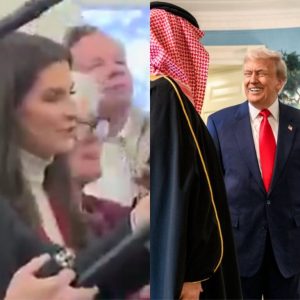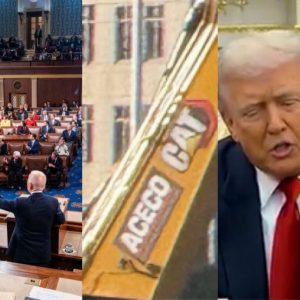Blunt letters dictating terms posted to social media and changes late in negotiations have left trading partners wondering what President Trump will do next.

Six months into his new administration, President Trump’s assault on global trade has lost any semblance of organization or structure.
He has changed deadlines suddenly. He has blown up negotiations at the 11th hour, often raising unexpected issues. He has tied his tariffs to complaints that have nothing to do with trade, like Brazil’s treatment of its former president, Jair Bolsonaro, or the flow of fentanyl from Canada.
Talks with the United States were like “going through a labyrinth” and arriving “back to Square 1,” said Airlangga Hartarto, the Indonesian minister for economic affairs, who met with U.S. officials in Washington on Wednesday.
The resulting uncertainty is preventing companies and countries from making plans as the rules of global commerce give way to a state of chaos.
“We’re still far away from making real deals,” said Carsten Brzeski, global head of macroeconomics at the bank ING in Germany. He called the uncertainty “poison” for the global economy.
Gone is the idea that the White House would strike 90 deals in 90 days after a period of rapid-fire negotiation, as Mr. Trump pledged in April. Instead, Washington has signed bare-bone agreements with big trading partners including China, while sending many other countries blunt and mostly standardized letters announcing hefty tariffs to start on Aug. 1.

Policymakers in Indonesia, Japan and elsewhere learned about letters setting tariff rates only when Mr. Trump posted them on social media. Mr. Airlangga said he was “amazed and surprised” to find that his country would face a 32 percent tariff, unchanged from what was announced in April. Negotiations had been going well, he thought.
Trading partners who have received such letters are now frantically pushing to reduce the country-specific rates, which range from 20 percent to 50 percent, though Mr. Trump has at some points suggested that room to negotiate may be limited.
For those who have not yet received a letter — Mr. Trump suggested on Thursday that the European Union’s was coming imminently — the developments have underscored that any negotiations are precarious. Trade deals appear to hinge on one person, Mr. Trump, and even carefully constructed agreements can be upended on his whim.
“People are dealing with it as a rolling damage-limitation exercise,” said Andrew Small, a senior fellow at the German Marshall Fund who worked until recently as an adviser at the European Union’s executive arm.
Kush Desai, a White House spokesman, said countries were continuing to eagerly offer concessions to maintain access to the American economy. Mr. Trump had been clear that the United States, as the world’s biggest and best consumer market, “holds the cards and leverage in negotiations,” he said.
Yet even reaching a trade deal may not diminish uncertainty. Mr. Trump proclaimed on social media in July that he had made a trade agreement with Vietnam that would charge a 20 percent tariff on Vietnamese products, with a higher 40 percent tariff rate on some goods that have Chinese components in them.
“In return, Vietnam will do something that they have never done before, give the United States of America TOTAL ACCESS to their Markets for Trade,” he said.
But the countries never released a joint statement clarifying what they had agreed to. Three people familiar with the matter, who declined to be named to discuss sensitive conversations, said Vietnamese officials had not agreed to the tariffs that Mr. Trump announced, and that negotiations were ongoing.
Two of the people said the countries had reached an understanding on trade, but when Mr. Trump spoke on the phone with Vietnamese General Secretary To Lam on July 2, he took it upon himself to renegotiate some of those terms, surprising officials on both sides.
A White House official who declined to be named because he was not authorized to speak publicly about the matter said the Americans and Vietnamese had reached an agreement. But he declined to elaborate further. He said both sides were continuing to discuss details of the higher tariff rate for goods with Chinese components, and had agreed to negotiate them in more depth later.
“I have been reporting on economics, trade and international relations for over a decade, from both China and the U.S. I aim to underpin my work with data and numbers, as well as give voice to the personal stories of people I encounter in my reporting.”
Mr. Trump’s push to reorder the global trading system started in February, shortly after he took office. Since then, he has imposed tariffs on sectors including metals and cars, and on specific countries, including Canada and China.
In early April, Mr. Trump announced across-the-board tariffs that applied in different amounts to different countries, calculated using a simple equation that relied in part on a nation’s trade gap with the United States.
After Mr. Trump unveiled the numbers on a poster in the Rose Garden of the White House, a rapid volley of negotiations kicked off. Trading partners began to flock to Washington to try to talk down their rates while securing carve-outs for sectors.
Within a few days, Mr. Trump partially suspended the across-the-board tariffs until July 9 to allow for three frenzied months of deal-making.
The United States announced a framework agreement with Britain in May, and a handshake with Vietnam last week that now appears to be in flux, but most countries have not made a deal yet.
Image

Mr. Trump sent out nearly two dozen letters this week telling trading partners they would be subjected to hefty tariff rates, though the date when they start to bite has been pushed back to Aug. 1.
And even those who thought that they might be close to an agreement might watch those careful negotiations implode.
Take the European Union, which is by some measures America’s single most important trading partner. The 27-nation bloc has been working toward an agreement that would likely include a 10 percent base-line tariff, with exemptions for key goods. In return, the bloc would pledge to buy more from and invest more in the United States.
But E.U. officials have long been unwilling to say they think a deal is likely. Even before Mr. Trump announced in an interview with NBC on Thursday that the bloc would soon receive a letter of its own, European policymakers remained painfully aware that the situation could detonate.
That’s partly because of the cautionary tale of Canada. Negotiations there were disrupted for a dramatic 48 hours in late June over the country’s digital-services tax, which would have applied to large U.S. tech companies. Mr. Trump said he wouldn’t continue negotiating if the tax remained in effect, and Canada’s government quickly dropped it.
Canada had then been negotiating toward an agreement by a July 21 deadline when on Thursday, it, too, received a letter announcing a 35 percent tariff and a new deadline of Aug. 1.
Nor has Canada been the only last-minute surprise.
The United States lurched into a sudden trade war with Brazil on Wednesday after Mr. Trump announced in a letter to President Luiz Inácio Lula da Silva of Brazil that 50 percent tariffs would take effect on Aug. 1.
“The way that Brazil has treated former President Bolsonaro, a Highly Respected Leader throughout the World during his Term, including by the United States, is an international disgrace,” Mr. Trump wrote.
A few hours later, Mr. Lula said that Brazil would reciprocate against the tariffs. “Brazil is a sovereign country with independent institutions that will not accept being abused by anyone,” he said in a statement.
Thai officials also received a letter from Mr. Trump, but they emphasized reasons for hope.
Pichai Chunhavajira, the finance minister, said on Tuesday that Mr. Trump must not yet have taken into account a revised proposal to increase bilateral trade when he sent a letter setting the tariff at 36 percent, unchanged from April.
“It is a template, everyone gets the same letter and the same text applies for every country,” said Supavud Saicheua, who is an adviser to Mr. Pichai. Thai negotiators are still unclear about what Mr. Trump wants, Mr. Supavud added.
The 36 percent tariff “was calculated by some math that we have never heard of before,” he said.
Even countries that hope they are in a solid negotiating position face uncertainty.

While Indian officials have been emphasizing Mr. Trump’s warm relations with Prime Minister Narendra Modi, the United States has made tariff announcements over the past week that threaten to rock India’s economy.
Mr. Trump said at a meeting in the White House this week that, after a year, imports of all pharmaceutical products would be “tariffed at a very, very high rate, like 200 percent.”
That would be crushing for India, where pharmaceutical exports earned almost $30 billion last year, with the United States its biggest market by far.
America’s trading partners have seen that there are no guarantees, except that further trade whiplash probably lies ahead.
“We understand that the decision is on the POTUS,” Mr. Airlangga from Indonesia said, using the acronym for the President of the United States.
Alexandra Stevenson, Alex Travelli, Amy Chang Chien, River Akira Davis, Matina Stevis-Gridneff and Jack Nicas contributed reporting.





